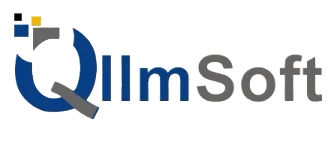
Top 5 Tools for Agile Teams
In today's fast-paced tech landscape, agility isn’t just a
methodology—it’s a survival strategy. Agile teams work in quick iterations, adapt to
change rapidly, and aim for continuous delivery and improvement. But to do all that
effectively, they need the right set of tools to support collaboration, planning,
and transparency.
Whether you're a software development team, a marketing squad, or a cross-functional
product group, the tools you use can make or break your sprint. Let’s dive into the
top 5 tools that Agile teams around the world trust to keep workflows efficient,
transparent, and collaborative.
1. Jira – The Gold Standard of Agile Project Management
When it comes to Agile and Scrum-based project management, Jira by Atlassian is the undisputed leader. Jira offers powerful features for sprint planning, user story tracking, issue management, and backlog grooming. Its customizable dashboards and detailed reporting features make it ideal for Agile teams of all sizes. You can easily visualize tasks using Kanban or Scrum boards, and integrate it with other developer tools like Bitbucket and Confluence. Jira also supports burndown charts, velocity tracking, and automated workflows.
Why Agile Teams Love It:
- Complete sprint planning and tracking
- Advanced issue and bug management
- Rich ecosystem of integrations
2. Trello – Simplicity Meets Agility
For teams looking for a lighter, more visual alternative, Trello is a fantastic option. Also owned by Atlassian, Trello is perfect for small to mid-size teams that want an easy-to-use Kanban-style interface. It allows team members to move cards across boards, set deadlines, assign team members, and automate recurring tasks using "Butler." What makes Trello stand out is its intuitive drag-and-drop interface, flexibility, and simplicity. It’s great for Agile beginners or teams that don’t need the complexity of Jira.
3. Slack – Agile Communication, Streamlined
Communication is the backbone of Agile, and Slack is one of the most popular tools for keeping Agile teams in sync. From creating channels for sprint discussions to integrating bots for daily standups, Slack enables real-time collaboration like no other. It also supports integrations with Jira, GitHub, Google Drive, and more—making it the perfect hub for Agile conversations and updates. Plus, its search feature helps team members quickly find previous decisions, files, and messages.
4. ClickUp – All-in-One Agile Workspace
ClickUp is rapidly growing in popularity among Agile teams due to its versatility. It combines task management, docs, goals, and time tracking into one platform. You can create Agile workflows, build product roadmaps, assign sprint tasks, and monitor performance all in one place. Its customizable views—including List, Board, Gantt, and Calendar—make it easy for different team members to work the way they prefer. ClickUp also offers in-depth reporting features, making sprint retrospectives more insightful.
5. Miro – Visual Collaboration for Remote Agile Teams
Agile planning often involves whiteboards, sticky notes, and brainstorming sessions. Miro brings all of that into the digital world. It’s an online collaborative whiteboard that allows Agile teams to create user story maps, sprint retrospectives, workflows, and wireframes in real time—even if everyone is remote. It’s especially useful during sprint planning meetings and product design discussions. Miro makes collaboration feel dynamic and visual—just like in a physical meeting room.
Choosing the Right Tools for Your Agile Team
Every Agile team is unique. Some are small and nimble, others are large and complex. Some focus heavily on product development, while others are more design or marketing-centric. The key to success is finding the tools that match your team’s size, workflow, and goals.
Before adopting a tool, consider your team’s current pain points:
- Do you need better sprint visibility?
- Is communication slowing you down?
- Seamless Integration Businesses often use multiple platforms and tools. Custom software is designed to integrate seamlessly with your current technology stack, reducing friction and improving performance.
- Are tasks slipping through the cracks?
By identifying your needs first, you’ll be able to choose the right combination of tools that streamline your Agile process and promote transparency, accountability, and speed.
